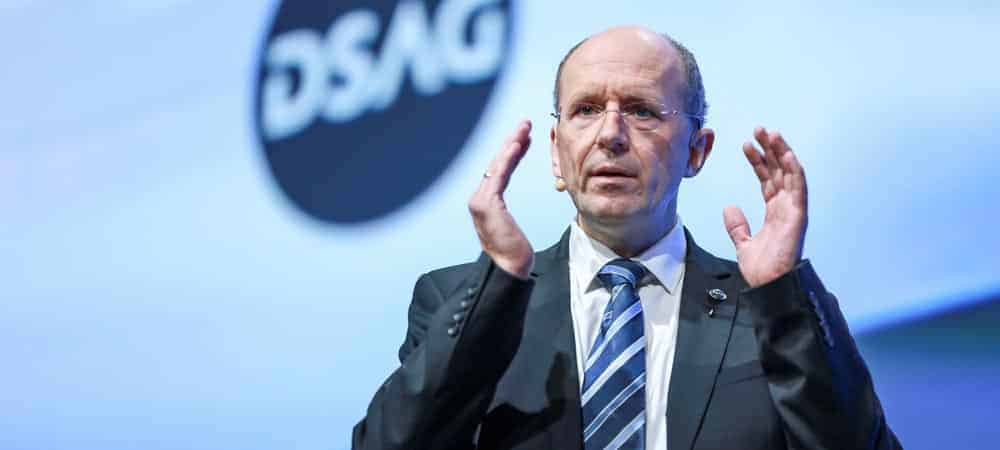What progress have SAP user companies made toward digital transformation? A survey of DSAG members released during the annual DSAG conference has revealed that boosting the efficiency of existing operational processes (62%) and developing new business models (40%) are among the biggest drivers of digitalization projects.
Meanwhile, changes in market conditions, closer relationships with clients and partners, improved service, and the desire for greater information transparency exert less pressure to go digital.
Meeting the need for increased efficiency, DSAG members are implementing projects to digitalize their processes. Forty-one percent of companies have either completed or are in the process of completing efficiency projects.
This is an encouraging number. However, the survey also revealed that companies have many ideas and create proofs-of-concept and prototypes, but then fail to implement these projects successfully.
“Almost half of all ideas for digitalization projects come to nothing, both for organizational and technical reasons,” explains Chairman of the DSAG Board Marco Lenck. DSAG surveyed its members to find out what obstacles cause these projects to fail.
Obstacles on the path to digitalization
The biggest challenges include a lack of staff and financial resources (42%) and an under-developed digital corporate culture (38%). Other obstacles cited by respondents include staff’s resistance to change and rigid organizational structures. “What surprised us was that lack of know-how was one of the lesser cited obstacles, even though there’s a shortage of IT experts,” Marco Lenck adds.
What role can SAP play in digitalization?
Alongside cultural and staff challenges, member companies are faced with informational, technical, and functional hurdles that are hampering their digital transformation efforts, such as developing hybrid environments. SAP strategies and roadmaps must be plannable and resilient.
Only 25% of DSAG members feel well-informed by SAP. Forty-five percent partly trust their product strategy, while 30% of users have no confidence in it. This is a strong signal to SAP that it must provide its customers with forward-looking, reliable information. “We know that SAP is aware of these numbers and is working to chance them,” Marco Lenck says.” However, it has to keep pace with the rapid digital transformation of user companies. Customers can’t just wait around for SAP to finally get it right while the new digital world passes them by.”
As for the SAP solutions portfolio, there are also concrete tasks that SAP needs to do better in order to provide adequate solutions for digitalization. These include:
- better integration,
- uniform master data,
- enhanced, stable functionality, and
- scalable solutions and licensing models.
“As companies are increasingly turning to hybrid environments as part of digitalization, SAP needs to make its design, development, and operation, including its licensing models, as simple, flexible, and appealing as possible. Otherwise, projects will stall again,” warns Marco Lenck.
SAP already tackled some challenges in that regard. An important issue has now been addressed. After intensive discussions, from 2022 onwards, customers will be able to use the SAP Human Capital Management solution (SAP HCM) also integrated in S/4 Hana. This is sure to particularly please those SAP customers who cannot or do not want to switch to SuccessFactors in the cloud around 2025.
“We want to give customers the freedom of choice,” added SAP COO Christian Klein at the DSAG conference. “We as SAP want to continuously provide customers with new innovations for both on-prem and cloud deployments.”
DSAG assessment of SAP products for digitalization
As part of the survey, CIOs and other representatives of DSAG member companies were also asked about their use of S/4 Hana compared to the Business Suite. S/4 Hana is increasingly seen as a foundation for digital transformation. Over the next three years, many companies have plans to implement migration projects.
However, as before, only very few companies have announced completion of an S/4 Hana project. Still, the solution has attracted considerable interest.
The situation looks a little different for SAP solutions for the digitalization of customer processes, like C/4 Hana and Qualtrics. Although they are used by member companies, they are not as well-represented as their competitors. For C/4 Hana, everything rests on whether or not SAP delivers the benefits of integration and harmonization.
“In order to ensure that new SAP products are accepted and used by DSAG members, they need a functional integration. If this is the case, SAP will be better positioned to add value to customers deployments as a provider of hybrid solutions,” states Marco Lenck. It goes without saying that DSAG members also want to see flexible scalability and comparable functionality to that offered by third-party products. Here, too, DSAG and SAP are talking about possible solutions.





















Add Comment